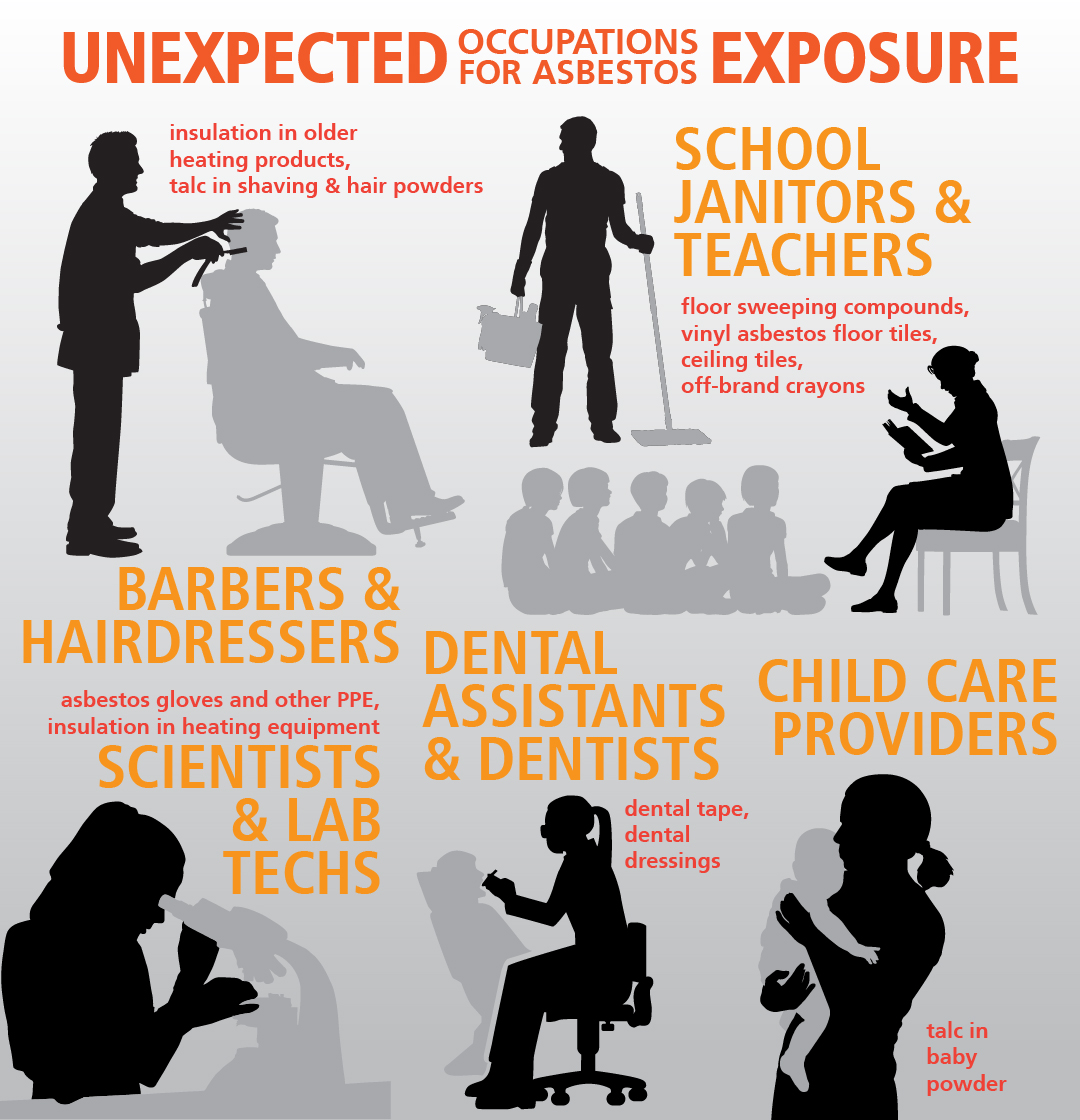
Mesothelioma Awareness Month: Jobs you didn’t know pose a risk | Causes, Not Just Cases®
Every September – Mesothelioma Awareness Month – we at Motley Rice join advocates throughout the country and around the world in raising awareness on the dangers of asbestos exposure. With thousands more lives lost due to deadly asbestos with each passing year, we all can only hope and do our part to demand that our nation’s leaders finally bring an end to this preventable loss and devastation by banning asbestos outright.

Mesothelioma is an aggressive and deadly form of cancer that can take 20 to 60 years, or more, to develop. The cancer occurs in the thin layer of tissue that covers the majority of people’s internal organs. Treatments are available but, unfortunately, a cure is not currently possible. Research is clear on one proven cause of mesothelioma, and that’s asbestos exposure. Inhaling or ingesting asbestos fibers may cause permanent damage to vital organs. Mesothelioma symptoms include chest pain, painful coughing, abdominal swelling and unexplained weight loss. Prevention and education are of utmost importance as we work toward an America without asbestos.
If you don’t think asbestos exposure is something you, personally, need to be concerned about, you’re wrong. Decades of frequent use of the mineral in everything from plumbing to hairdryers means asbestos is now all around us, often hiding in plain sight. As it stands, anyone could be exposed, including through seemingly benign household items like talc-based powders or on the job.
Historically, warnings about asbestos exposure risk often focused on industrial workers who encounter asbestos on a daily basis, including railroad, sheet metal, mill, maritime, and construction workers. Other occupations and trades at a heightened risk of asbestos exposure may be viewed here.
While industrial workers certainly have a heightened risk of asbestos exposure, they aren’t the only ones who develop mesothelioma due to workplace exposure. For example, in recent years we’ve seen that increasing numbers of firefighters and other first responders who selflessly placed themselves in harm’s way to save others during the terrorist attacks on September 11, 2001, are now developing mesothelioma (and other life-threatening diseases) caused by exposure to toxic dust and debris at Ground Zero.
Demanding safe work environments is everyone’s business
The risk of asbestos exposure varies throughout different work environments. A list of occupations people hold that you may not have known put them at risk of asbestos exposure include:
Childcare providers
Talcum powder is commonly used in certain baby powders. In its raw form, talcum powder — comprised of magnesium, silicon and oxygen — may contain traces of toxic asbestos, because the minerals are often found close to each other in the earth and asbestos may contaminate the talc during mining. Thousands of people allege they developed mesothelioma and other cancers by inhaling or being exposed to asbestos-contaminated talc. Johnson & Johnson announced in 2020 that it would discontinue its talc-based products. Read more on that in my colleague Carmen S. Scott’s blog: Dirty Dancing: It’s time to put J&J’s Baby Powder in the corner!
School janitors
Prior to the 1980s, schools across the U.S. had no regulation on asbestos – meaning the previously marketed “wonder material” could be found in insulation, vinyl asbestos floor tiles and ceiling tiles. A product made by asbestos manufacturer Johns Manville was also thrown on wooden floors to help sweep up dust.
School teachers
School teachers could be working in environments that contain asbestos to this day. If the school was built prior to 1981, whether private or public, there is a likelihood of asbestos. In 2018, certain crayons had trace amounts of asbestos. These factors leave our educators at a heightened risk of mesothelioma and other asbestos-related disease.
Lab technicians and scientists
Instances have been reported of scientists and technicians being exposed to asbestos through lab equipment and personal protective gear. In Canada, an agricultural laboratory worker was exposed because he used asbestos gloves.
Dentists and dental assistants
In the past, asbestos was used in dental tape and dental dressings. Dental lining tape contained asbestos from the 1930s until at least the 1970s.
Barbers and hairdressers
Asbestos has been found in old hairdryers and electric curling irons. Various heating tools contained asbestos insulation. Any after shave containing talcum powder barbers use may be contaminated with asbestos.
The American Cancer Society states that “most cases of mesothelioma result from exposure to asbestos at work.” These workers could be taking asbestos fibers home with them on their clothes. Consequently, their family members, or those living with them, may also be at an increased risk of mesothelioma. No amount of asbestos exposure is safe.
We encourage you to follow or donate to the Asbestos Disease Awareness Organization – a platform focusing on asbestos awareness, and the prevention of disease through education, advocacy and community efforts. It is our job to demand that asbestos exposure is eliminated in all professions.
Subscribe to our blog if you’d like to have more content like this sent directly to your inbox.